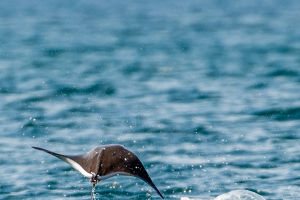Some people like goshawks that are resistant to wind and rain, some like larks with clear and melodious sounds, some like orioles with exquisite shapes, and some like magpies, which are hard-working auspicious birds.
Magpies have a wide distribution, almost all over the world except Antarctica, Africa, South America and Oceania.
Its morphological characteristics.
Males: head, neck, back, and tail coverts are black, with a purplish tinge on the back of the head and neck, and a blue-green on the back; the shoulder feathers are pure white; the loin is a mixture of gray and white.
Female bird: The body color is basically similar to that of the male bird, but the luster is not as obvious as that of the male bird.
Juveniles: Similar in appearance to females, but with a brown or dark brown body on the black part.
Its habits.
Habitat.
Magpies are relatively adaptable birds. They live in mountains and plains. They can be seen in wilderness, farmland, suburbs, cities, parks and gardens.
Activity.
Magpies usually live in small groups of 3 to 5. Except for the breeding season, they often gather in large groups of dozens in autumn and winter.
Foraging.
Diets are complex, with food components changing with seasons and circumstances. In summer, it mainly eats animal foods such as insects, and in other seasons, it mainly eats plant fruits and seeds.
When magpies raise young birds, they will catch a large number of locusts, caterpillars, etc.
Besides animals that crawl on the ground and animals that jump in trees, magpies are also interested in animals that swim in the water.
Small fish on the shore are often a delicacy for magpies and even good food for feeding young birds.
Magpies are very alert and are often guarded by a bird while foraging. When the male birds forage on the ground, the female bird stands on a high place to watch, the female bird forages, and the male bird watches.
Flight ability.
Magpies have strong and long-lasting flying abilities. When flying, the whole body is in a straight line with the tail, the tail is slightly open, and the wings are slowly agitated.
Males and females often maintain a certain distance, and when they are on the ground, they move forward in leaps.
Fun fact.
Why don't eagles eat magpies?
As the "big wisdom" in the bird world, magpies have strong social skills.
If the magpie is competing with the crow for food, suddenly an eagle falls from the sky. Magpies will join crows against eagles. Because magpies feel that they belong to the same corvidae family as crows and are brothers.
In this case, the Eagles have no advantage.
Have you ever seen a magpie? Why would you like it?


